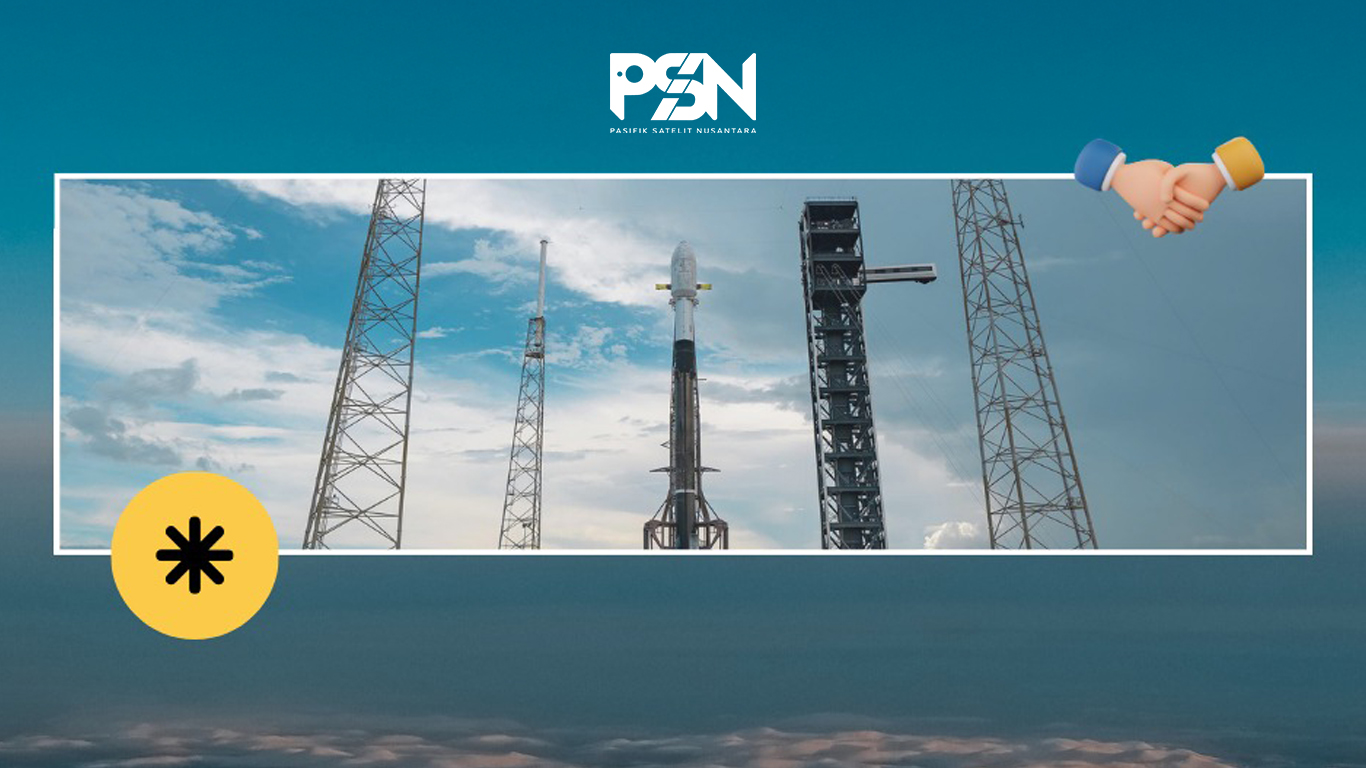PSN as a Pioneer
Since its founding in 1991, Pasifik Satelit Nusantara (PSN) has been the first private satellite company in Indonesia. Its commitment to competing globally has led PSN to continuously innovate and fulfill its commitment to developing the Indonesian satellite industry. PSN’s track record includes the launch of Palapa-C2 in the 1990s and continues with various other important satellite projects, including the launch of Nusantara Satu in 2019 and Nusantara Tiga in 2023. Now, with the launch of Nusantara Lima, PSN is affirming its role as a pioneer and driving force for the nation’s digital independence.
Large Capacity for Digital Sovereignty
On September 11, 2025, the Nusantara Lima Satellite was successfully launched from Cape Canaveral, Florida, aboard a SpaceX Falcon 9 rocket. This 7.8-ton satellite has a capacity of 160 Gbps, making it the largest in Asia. Very High Throughput Satellite (VHTS) technology with 101 spot beams enables extensive coverage from Sabang to Merauke, extending to the Philippines and Malaysia. This satellite also uses a Xenon-Ion-based hybrid propulsion system, which is more efficient than conventional satellites.
Global Collaboration
The successful launch of the Nusantara Lima Satellite was born from collaboration with proven international partners. Boeing handled the satellite’s design, assembly, and integration. SpaceX was responsible for the launch and the satellite’s orbital reach. Hughes Network Systems provided the HUB and reference terminal. Kratos provided gateway antenna services. PCCW Global strengthened the Telemetry, Tracking, and Command (TT&C) function. Integrasys built a monitoring system for each gateway and reference terminal.
The involvement of global partners affirms PSN’s credibility as a trusted strategic partner in high-value projects. This strengthens PSN’s position at the national and regional levels and demonstrates the Indonesian satellite industry’s ability to operate in the global ecosystem.
Equitable Internet to the Outermost Regions
Nusantara Lima not only increases internet capacity but also serves as infrastructure for digital development. This satellite will open access to previously limited areas (3T) (Underdeveloped, Frontier, and Outermost). Schools on remote islands will also be able to benefit from distance learning, border health services will be connected with telemedicine, and MSMEs in villages will have the opportunity to expand their digital markets.
In the context of disasters, Nusantara Lima can play a role in maintaining active communications when landline networks are down. Regionally, this satellite service extends to the Philippines and Malaysia, emphasizing Indonesia’s contribution to strengthening ASEAN’s digital network.
Space Map in Indonesia
The launch of Nusantara Lima is part of the National Space Agency (PSN)’s long-term roadmap to develop a self-sufficient national satellite industry. With government support and international collaboration, PSN is committed to building a sustainable space ecosystem, from strengthening technology and increasing human resource capacity to utilizing satellites for strategic sectors such as defense, the environment, and disaster mitigation. This step confirms that the success of Nusantara Lima is not the end, but rather the beginning of a new phase towards digital sovereignty and Indonesia’s active participation in the global space industry.

